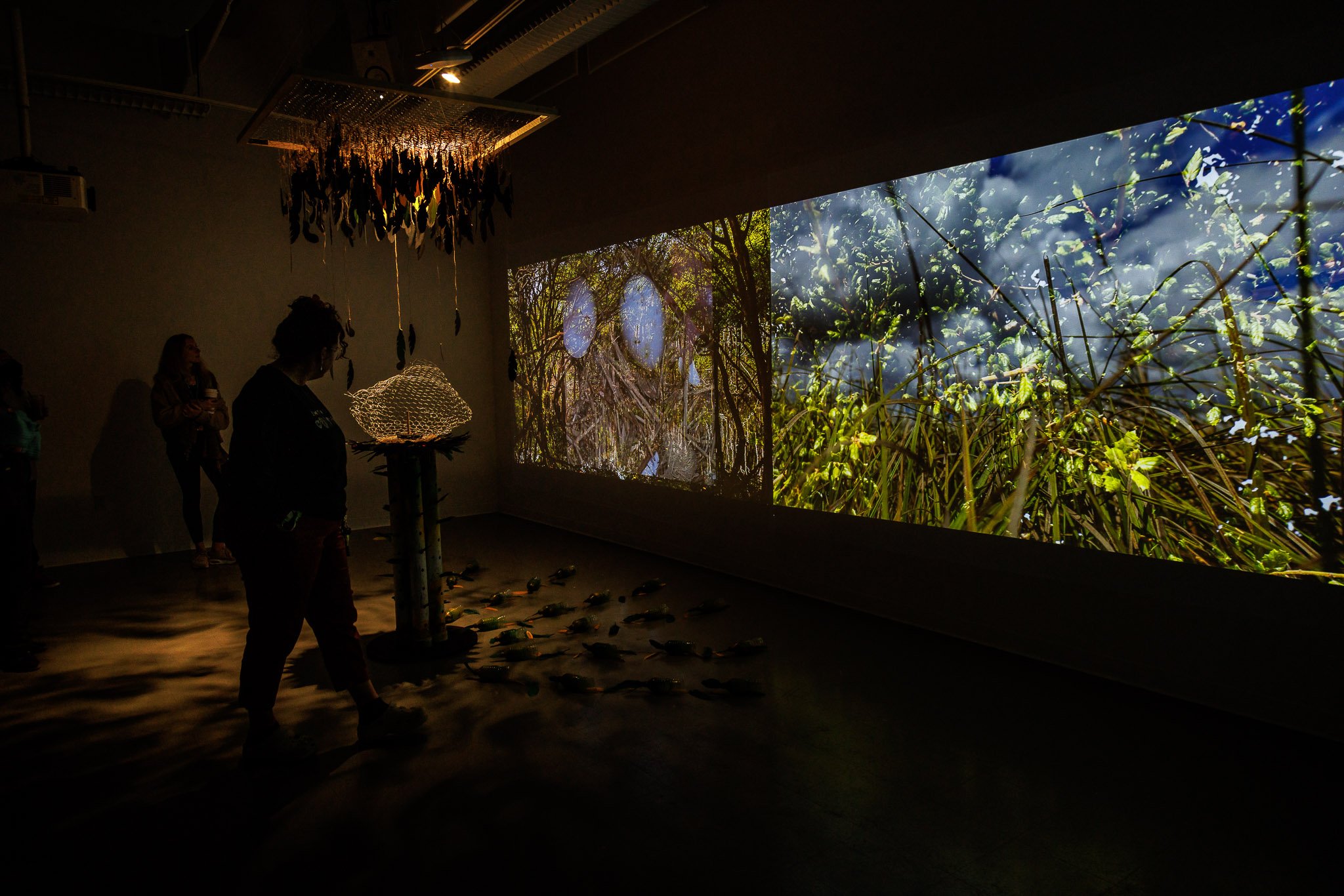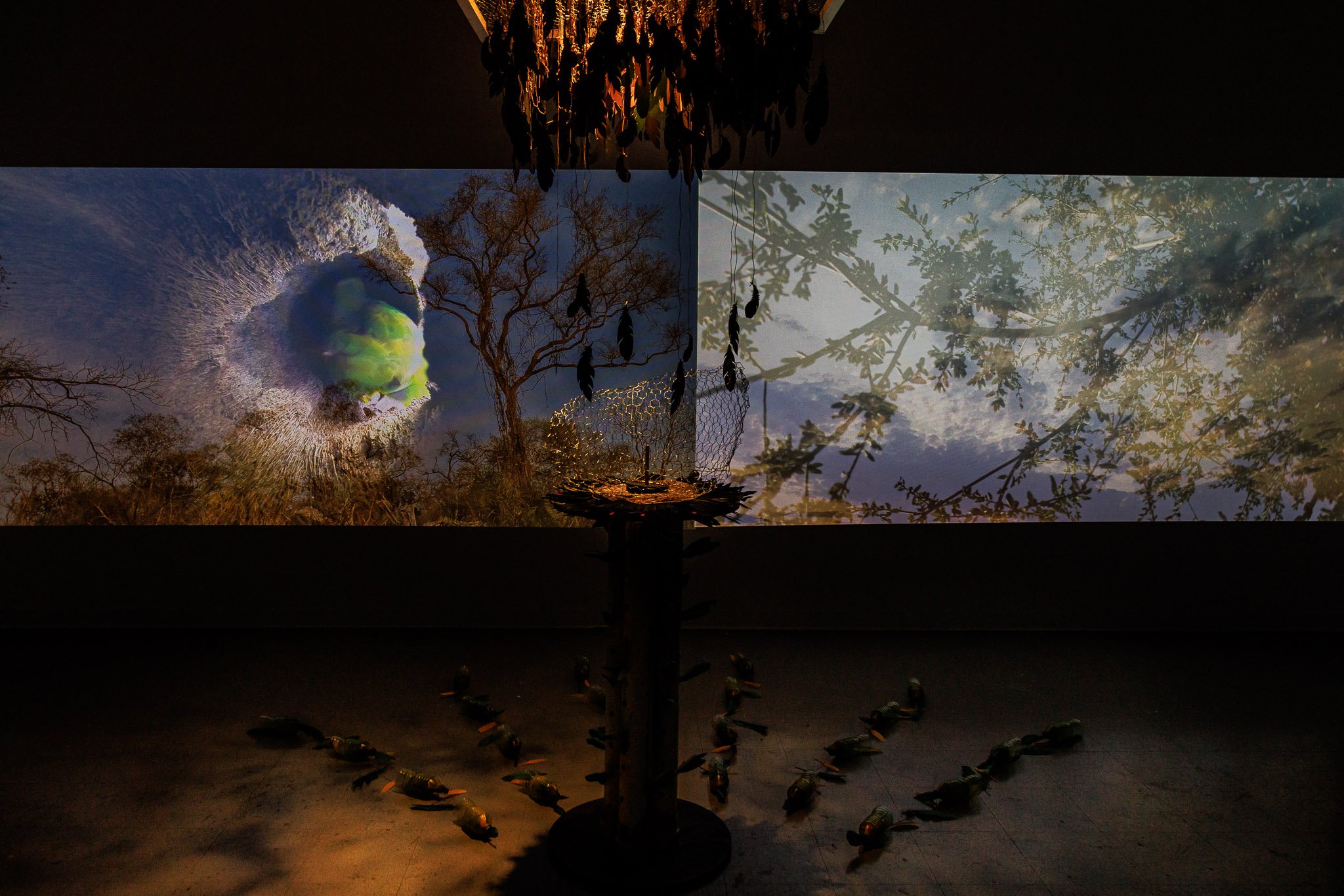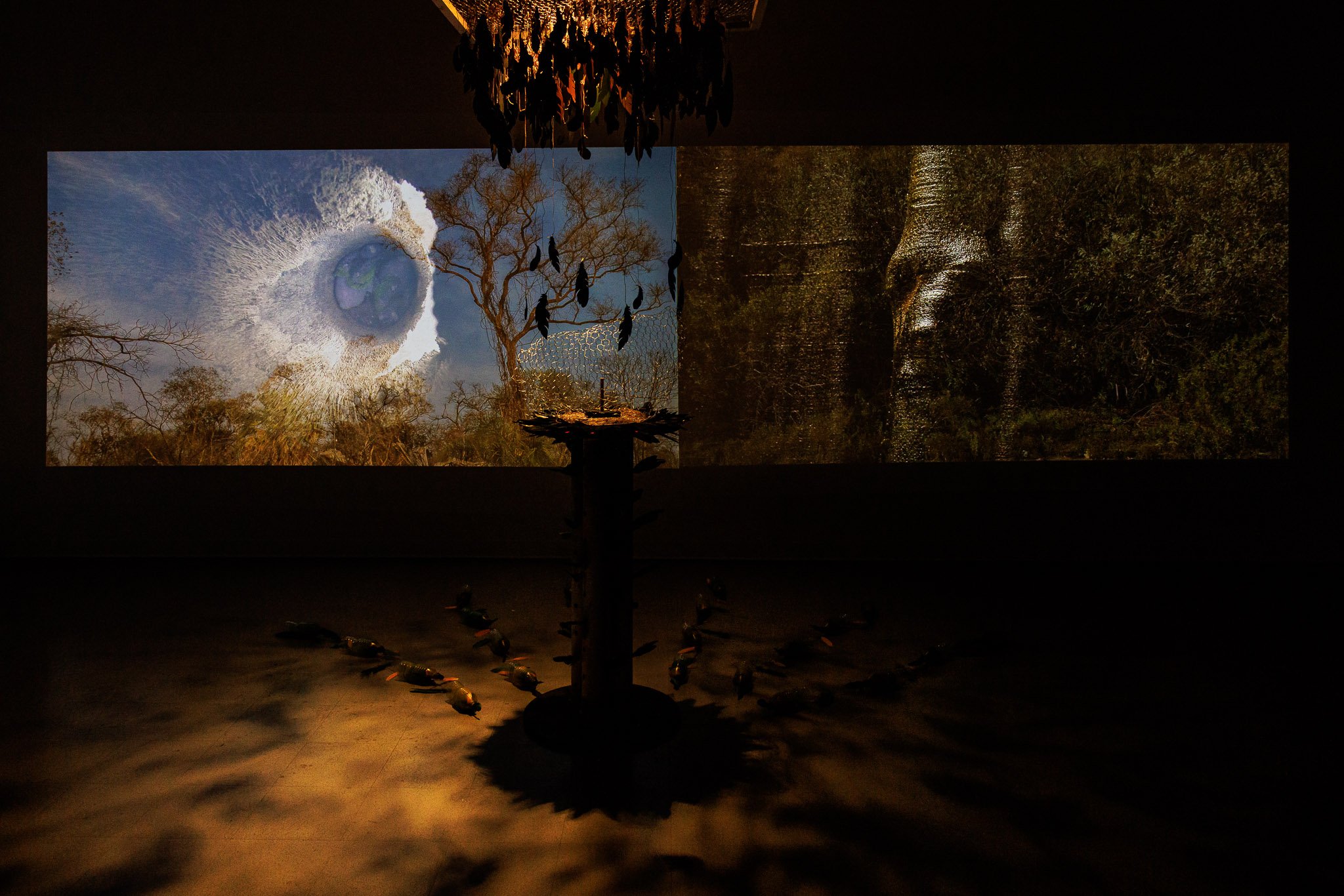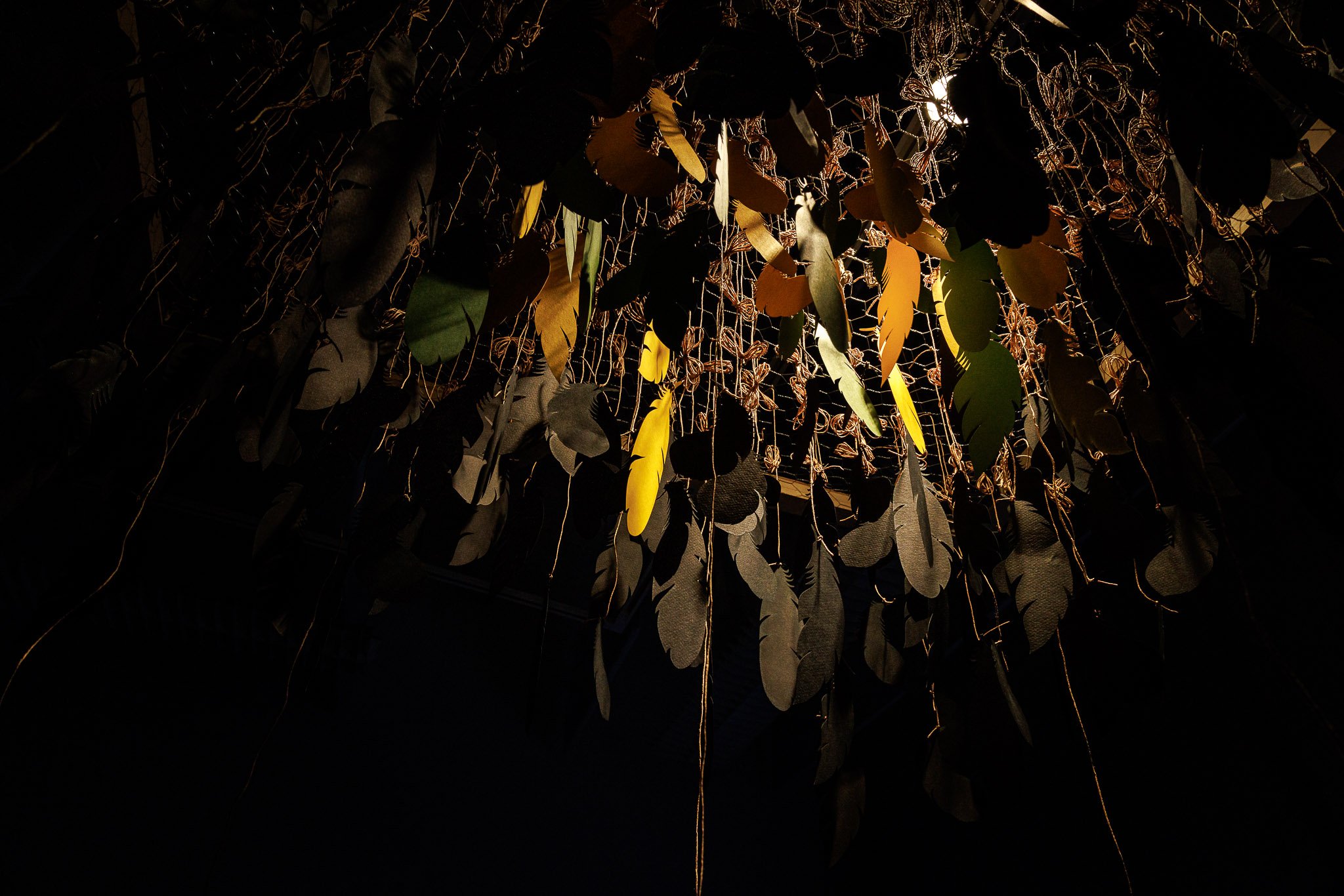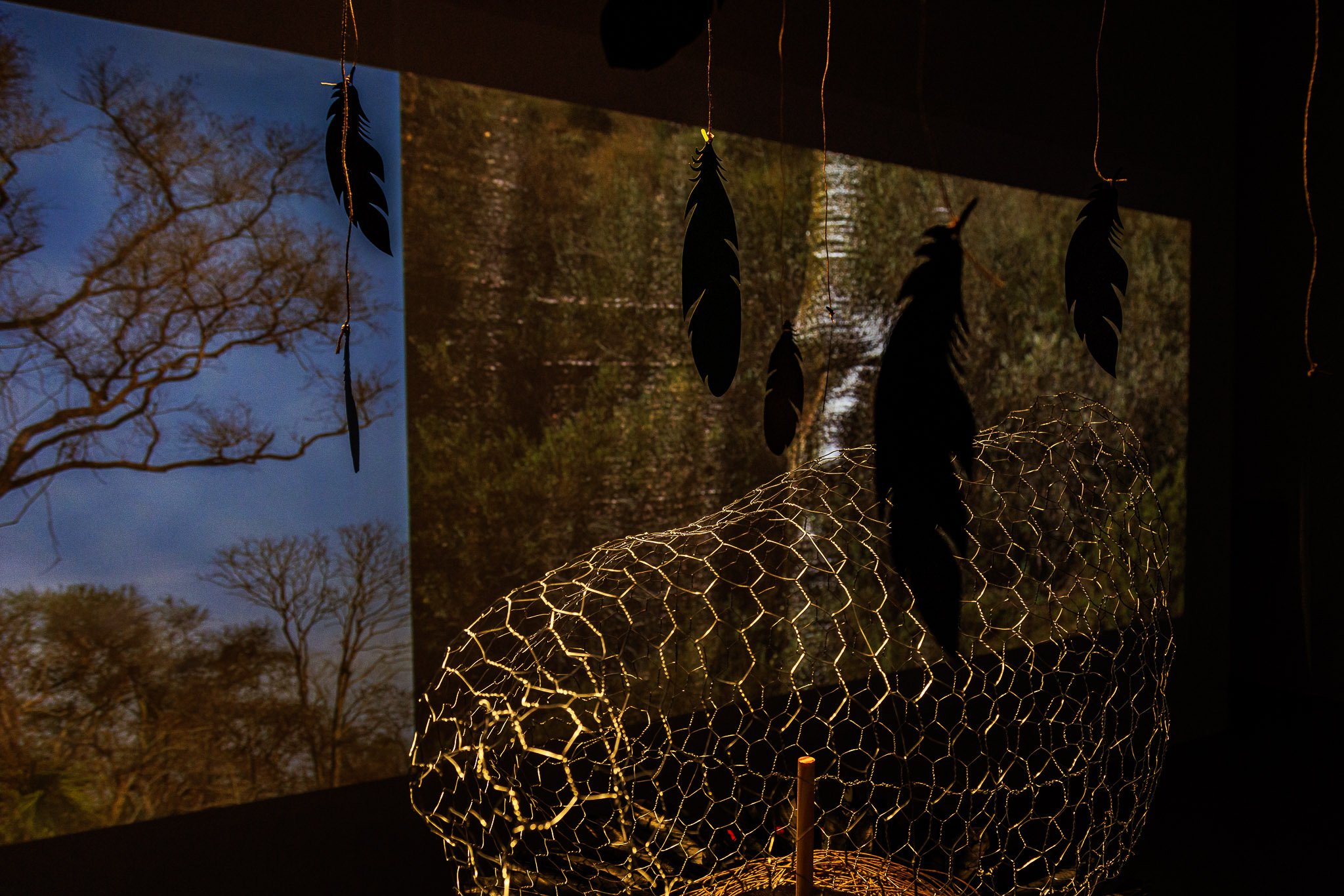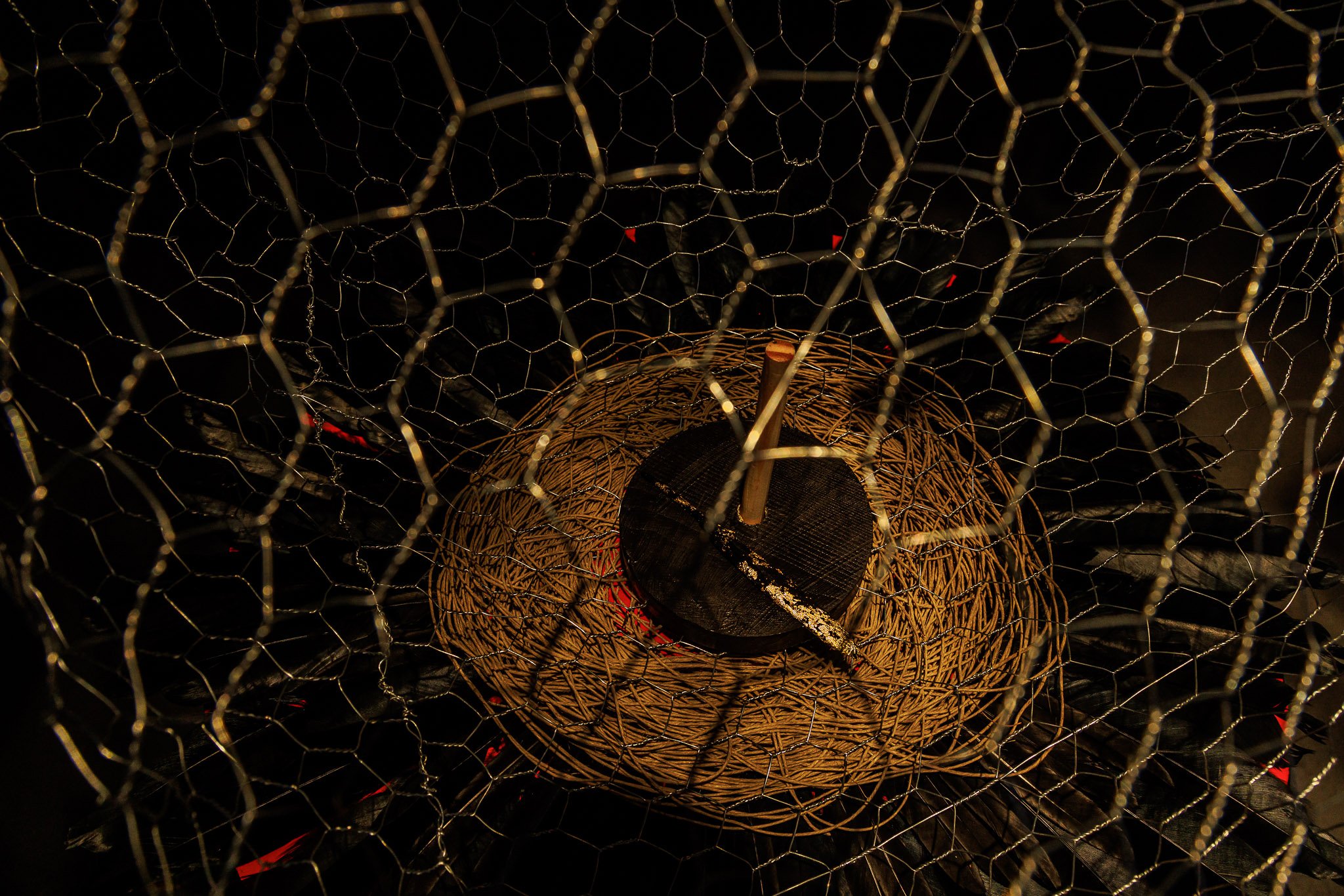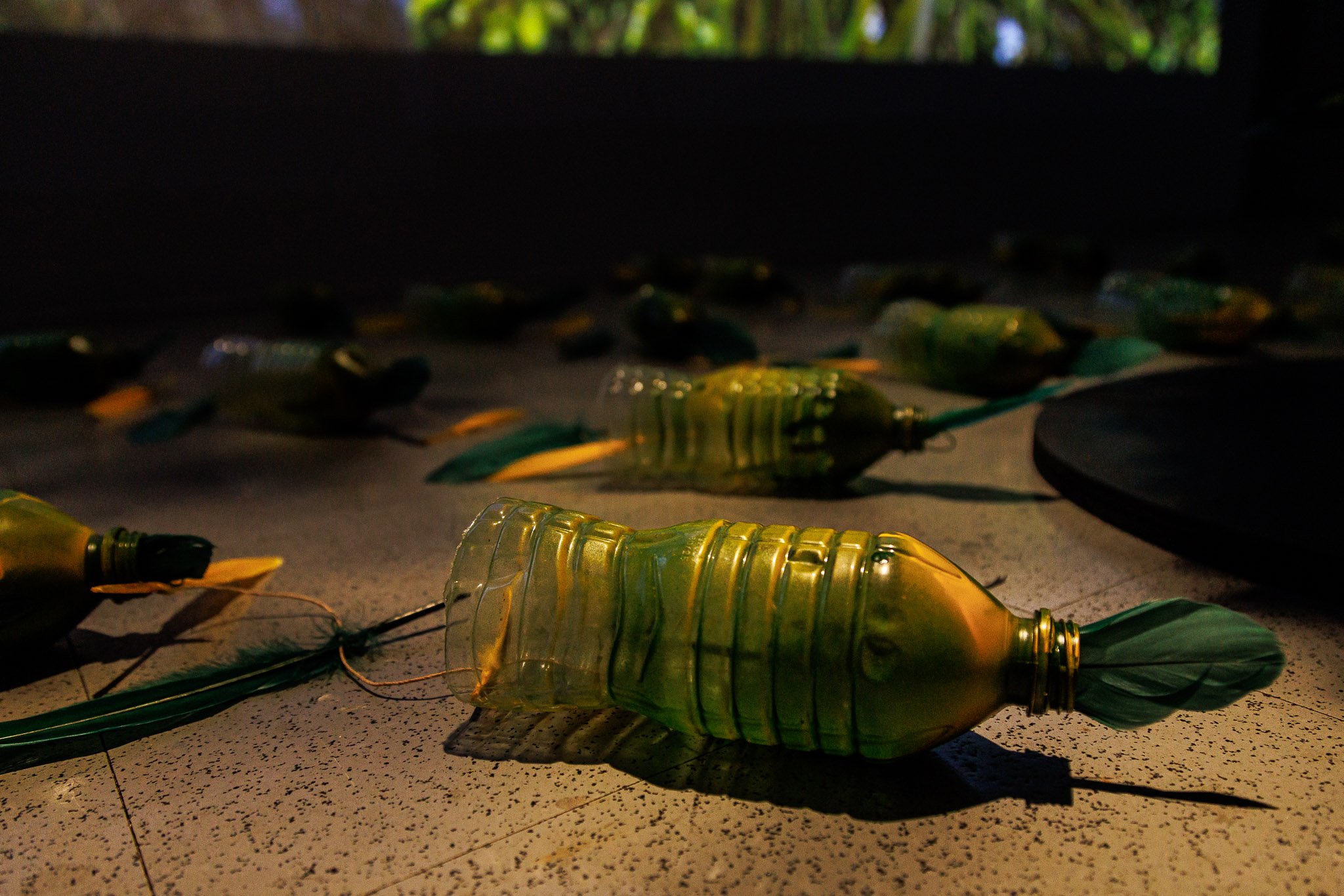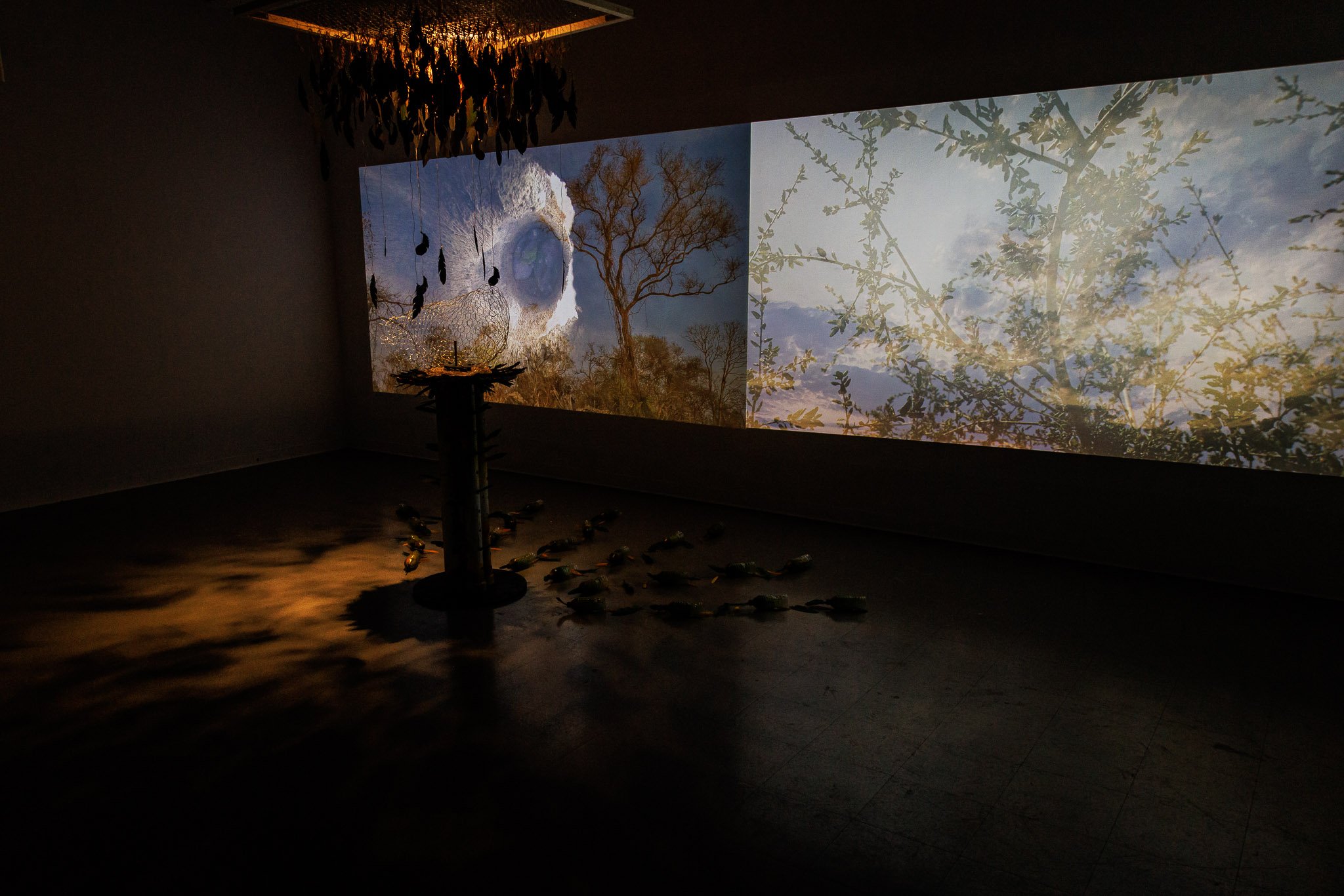Not singing, but crying
I was five years old when I pointed to a bird in a cage and shouted to my father, “Look, Dad, the bird is singing.” He immediately turned to me and told me that the bird was not singing but crying because he wasn’t supposed to be there. This was a lesson I always carried with me, and it probably helped shape my relationship with the environment and the beings that inhabit it.
Every year, around 38 million animals are removed from their habitats in the Brazilian ecosystem alone to meet national and international demand for pets and other purposes. The US State Department estimates that wildlife trafficking is the third-largest type of illegal trade after drugs and weapons.
In ‘Not singing, but crying,’ I chose the species Papagaio Verdadeiro (Blue-fronted Parrot), the most common Amazon parrots kept in captivity as pet or companion parrots, to represent all animals who suffered in the cruel process of trade, which includes being removed from nests and placed in pipes or plastic bottles to be transported. One in ten of these animals survives before spending a lifetime incarcerated.
This project is an invitation to empathize with these beings and reflect on the act of caring and loving.
Special thanks to the Papagaio Verdadeiro Project (@projetopapagaioverdadeiro), which cares for and fights daily so that these birds have the right to live their lives, and also provided me with the videos taken inside the monitored nests.
I would also like to thank the NGO Ampara Silvestre (@amparasilvestre), which provided me with research sources and served as a bridge between me and the project.
